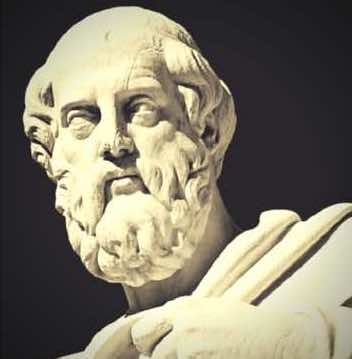Do Electrons Dream of Electric Sheep?
Philip Goff on panpsychism and the nature of matter
Panpsychism is the view that consciousness is a fundamental feature of all matter. Humans have rich and complex experience; horses less so, mice less so again. As organisms become simpler perhaps at some point the light of consciousness suddenly switches off, with simpler organisms having no subjective experience at all. But it is also possible that the light of consciousness never switches off entirely, but rather fades as organic complexity reduces, through flies, insects, plants, amoeba, and bacteria. For the panpsychist, this fading-whilst-never-turning-off continuum further extends into inorganic matter, with fundamental physical entities—perhaps electrons and quarks—possessing extremely rudimentary forms of consciousness, which reflects their extremely simple nature.
Panpsychism is clearly coherent, but do we have reason to think it’s true? In a recent piece for Oxford University Press blog, I presented what I call the ‘simplicity argument’ for panpsychism. A crucial premise of this argument is the thesis that physical science tells us less about the nature of matter than we ordinarily think. In the public mind, physics is on its way to giving us a complete account of the fundamental nature of space, time, and matter. Upon reflection, however, it becomes apparent that physical science is exclusively concerned with what matter does. Physics provides us with mathematical models that allow us to predict with great accuracy the behaviour of physical entities, but it tells us absolutely nothing about the intrinsic nature of those entities, about how they are in and of themselves. I call this the ‘austerity thesis’.
How does the austerity thesis lead to panpsychism? Whilst physical science tells us nothing about the intrinsic nature of matter, introspection provides us with a clue. In introspection, each of us is directly aware of the reality of our own conscious experience: our feelings, sensations, and sensory experiences. Assuming the falsity of dualism (the view that the mind is something separate from physical reality), my conscious experiences—those feelings and sensations I am aware of in introspection—are part of the intrinsic reality of my brain. And assuming the austerity thesis, this is the only thing we know about the intrinsic nature of matter: that some of it—the stuff in brains—has a consciousness-involving intrinsic nature. From this epistemological starting point, the most simple, parsimonious speculation about the intrinsic nature of matter outside of brains is that it is continuous with the matter inside of brains in also having a consciousness-involving nature. We’d need a reason to suppose that matter has two kinds of intrinsic nature rather than just one.
Of course, as with any philosophical argument, there are many ways this one can be challenged (fortunately I have conclusively addressed them all in my book Consciousness and Fundamental Reality). I want to focus here on one especially persistent complaint: Why on earth should we suppose that matter has an intrinsic nature in the first place? If physics just tells us what matter does, then maybe that’s all there is to matter. Maybe once you know what an electron does, you know everything there is to know about what an electron is. On this view—known in the philosophical literature as ‘causal structuralism’—physical entities are not so much beings as doings. Causal structuralism takes a bit of getting used to, but many would argue that it is coherent.
I beg to differ. In what follows, I will try to demonstrate that the universe that causal structuralists describe is unintelligible.
The Circularity Objection against Causal Structuralism
Causal structuralists believe that at the fundamental level of reality, all we find are dispositions. A disposition is a property that is characterized in terms of how it disposes objects to behave. Fragility and flammability are everyday examples of dispositions: fragile things are disposed to break (in certain circumstances) and flammable things are disposed to burn (in certain circumstances).
Physics characterizes physical properties in terms of dispositions. Mass, for example, is characterized in terms of the disposition to attract (massive things attract each other) and the disposition to resist acceleration; negative charge is characterized in terms of the disposition to attract (positively charged things) and the disposition to repel (other negatively charged things). Motivated by considerations of simplicity, the causal structuralist claims that basic physical properties, such as mass and negative charge, simply are dispositions. If mass just is a disposition, then its nature can in principle be perfectly captured by the mathematical models of physics.
The problem with causal structuralism is that its attempts to characterize the nature of matter lead either to a vicious regress or to a vicious circle. According to causal structuralists, we understand the nature of a disposition only when we know the behaviour to which it gives rise: what philosophers call its ‘manifestation’. For example, the manifestation of flammability is burning; we only know what flammability is when we know that it’s manifested through burning. However, assuming causal structuralism, the manifestation of any disposition will be another disposition, and the manifestation of that disposition will be another disposition, and so on ad infinitum. We only know what flammability is when we know what burning is; we only know what burning is when we know its numerous causal effects, for example, producing ash and smoke; we only know what ash and smoke are when we know their causal effects, and so on forever. The buck is continually passed, and hence an adequate understanding of the nature of any property is impossible, even for an omniscient being. In other words, a causal structuralist world is unintelligible.
Let’s try to make this clear with an example. According to general relativity, mass and spacetime stand in a relationship of mutual causal interaction: mass curves spacetime, and the curvature of spacetime in turn affects the behaviour of objects with mass. What is mass? For a causal structuralist, we know what mass is when we know what it does, i.e. when we know the way in which it curves spacetime. But to really understand what this amounts to metaphysically, as opposed to merely being able to make accurate predictions, we need to know what spacetime curvature is. What is spacetime curvature? For a causal structuralist, we understand what spacetime curvature is only when we know what it does, which involves understanding how it affects objects with mass. But we understand this only when we know what mass is. And so we find ourselves in a classic Catch 22: we can understand the nature of mass only when we know what spacetime curvature is, but we can understand the nature of spacetime curvature only when we know what mass is. G. K. Chesterton said that ‘We cannot all live by taking in each other’s washing’. Bertrand Russell played on this idea in articulating this worry about circularity: ‘There are many possible ways of turning some things hitherto regarded as “real” into mere laws concerning the other things. Obviously there must be a limit to this process, or else all the things in the world will merely be each other’s washing’.
The Holist Response
The most common response one finds to the circularity objection is that it relies on an unwarranted prejudice against holism. The word ‘holism’ is a bit slippery, but in this context we can take it to be the view that things are inter-defined, in the sense that the very identity of each thing is a matter of its relationships to every other thing. For the holist, entities come as a package: we can’t completely understand the nature of any one thing in isolation from the nature of everything else. Causal structuralism would seem to imply a kind of holism, as each thing is defined relationally, in terms of its effects, which are defined in terms of their effects, which are defined in terms of their effects, and so on until we eventually loop back in a circle.
Causal structuralists thus contend that the circularity objection begs the question against their view by demanding an account of a given property, such as mass, in isolation from all other things. Causal structuralism implies holism, and holism implies that the nature of things cannot be understood in isolation. And so the very demand for an account of mass in isolation from spacetime curvature would seem to be premised on the assumption that causal structuralism is false. If causal structuralism is true, then mass and spacetime curvature (and everything else) must be defined ‘all at once.’
I agree that mass can be uniquely identified—as it were, honed in on—in terms of its place in the abstract pattern of causal relationships realized by physical properties considered as a whole. But doing this doesn’t tell us what mass does. And according to causal structuralism, physical properties are defined in terms of what they do: by the effect they have on the concrete physical world. Thus if causal structuralism is true, in order to know the nature of a physical property, we need to know what that property does and not merely its place in an abstract pattern of causal relationships.
This is all getting very abstract, so let’s take a ludicrously simple example. Suppose I have three match boxes, and I tell you the first contains a ‘SPLURGE’, the second a ‘BLURGE’, and the third a ‘KURGE’. You innocently ask me, ‘Oh really, what’s a SPLURGE?’. I answer, ‘A SPLURGE is something that makes BLURGES’. Now, you can’t really understand my answer until you know what a BLURGE is, so naturally your next question is, ‘Fine, so what’s a BLURGE??’. I respond, ‘Oh, that’s easy, a BLURGE is a thing that makes KURGES’. But in a similar way, you can’t understand this answer until you know what a KURGE is, and so—starting to get a bit irritated—you now demand to know: ‘What on earth is a KURGE???!!’. My response: ‘It’s something that makes SPLURGES’.
You could be forgiven at this point for deciding you didn’t want anything more to do with this conversation. For although the discussion has taught you something about the abstract pattern of causal relationships that exist between SPLURGE, BLURGE, and KURGE, it has left you none the wiser about what any of them actually do. The same is true, although in a more complex way, of the description of physical reality offered by the causal structuralist. If causal structuralism is true, it is logically impossible to gain understanding of what anything does and hence logically impossible to gain understanding of what anything is. If this isn’t an unintelligible view, then I don’t know what is.
Towards a new conception of science
Five hundred years of physical science has yielded rich information about the causal structure of reality. This knowledge has enabled us to manipulate the world in undreamt of ways, producing extraordinary technology that has transformed society beyond recognition. These wondrous developments have a visceral effect on our metaphysical yearnings. We become inclined to think that we’ve finally found something that works, and that we’re at last discovering the nature of reality as it is in and of itself.
Sadly, that isn’t what physical science is doing. Physical science has been so successful precisely because, from Galileo onward, it stopped trying to tell us what matter is and just focused on mapping its abstract causal relationships. Natural human curiosity cannot rest with this. At some point, human society will once again return to the beautiful project of trying to work out the nature of reality: not just what matter does, but what it is. And in the context of that admittedly more speculative project, my bets are on panpsychism.
This essay is a companion piece to Are Electrons Conscious?, published by Oxford University Press.
The Source Code
This essay is based on the book Consciousness and Fundamental Reality by Philip Goff (Oxford University Press, 2017).






